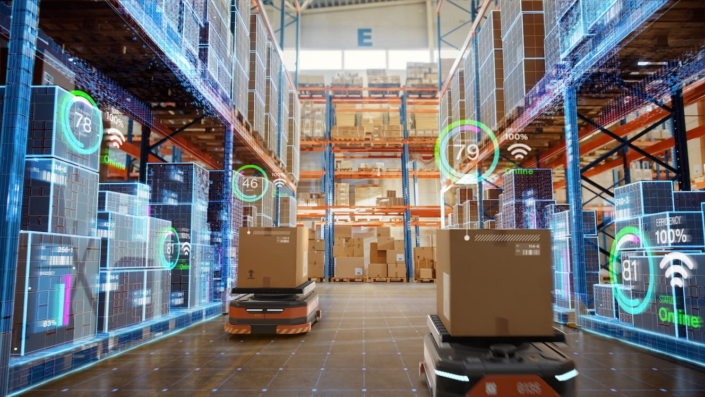Artificial intelligence (AI) is no longer a futuristic concept—it’s an essential tool for businesses looking to streamline operations, reduce costs, and enhance efficiency across the supply chain. From predicting transit times with precision to automating warehouse workflows and optimizing last-mile deliveries, AI is transforming logistics in ways that were unimaginable just a decade ago.
Whether you’re managing a logistics network, overseeing warehouse operations, or optimizing last-mile deliveries, AI provides the tools you need to stay competitive in an industry that is evolving faster than ever.
This blog series will dive into four major ways AI can transform your shipping strategy:
- Improving time-in-transit predictions
- Transforming the customer experience (Read it here)
- Eliminating inefficiencies in the warehouse (Read it here)
- Optimizing last-mile delivery (Read it here!)
Let’s start at the beginning: Improving time-in-transit predictions.
Accurate time-in-transit forecasting is the backbone of successful logistics operations. No matter the situation, knowing exactly when a shipment will arrive is critical to meeting customer expectations and controlling costs.
Traditional forecasting methods—relying on static models, historical data, and manual calculations—often fall short. AI-driven forecasting, however, is changing the game, giving logistics managers access to real-time, adaptive predictions that improve efficiency and reduce disruptions.
“AI is like having a consultant that has seen every shipment, every scenario, and can recommend the best choice for you.” – Joe Dieter
Predictive modeling based on real-time and historical data
AI isn’t just about processing data—it’s about learning from it.
Unlike traditional forecasting models that rely solely on past performance, AI-driven predictive models continuously ingest real-time shipping data, identifying patterns and adjusting forecasts dynamically.
For example, if AI detects a pattern where shipments through a specific hub experience frequent delays due to capacity issues, it will adjust future transit time estimates accordingly. This level of precision allows logistics managers to proactively adjust routing strategies before problems arise.
Carrier performance optimization
Not all carriers perform equally across different routes and shipment types. AI can analyze historical carrier performance data—factoring in on-time delivery rates, lane consistency, and seasonal trends—to provide more accurate transit time estimates.
When they understand which carriers perform best on certain lanes or under specific conditions, logistics managers can make smarter carrier selections, leading to more predictable and reliable delivery times.
Port and customs congestion monitoring
International shipments face additional complexities with port congestion and customs clearance delays.
AI-powered forecasting tools monitor real-time port activity, identifying congestion patterns that could delay shipments.
If AI detects that a port is experiencing heavy delays, it can automatically adjust transit time expectations and alert logistics teams to reroute shipments through a less congested port—reducing unexpected delays and avoiding penalties for late deliveries.
Adaptive machine learning models
One of the biggest advantages of AI over traditional forecasting is its ability to continuously improve over time. Instead of relying on fixed assumptions, AI-powered time-in-transit models evolve as they receive new data.
What does this mean for your shipping operations?
Simply put, good AI tools will keep up with your business’s growth. An AI shipping platform is one of your most valuable resources for reacting quickly to shifting consumer expectations, economic upheavals, and more.
Follow along for more ways AI is transforming logistics
Remember, deliveries don’t end when a shipment arrives on time—customer expectations continue long after a package reaches its destination. AI isn’t just optimizing delivery schedules; it’s also transforming how companies interact with customers, providing real-time updates, resolving issues faster, and personalizing service at scale.
To learn how AI can help improve the customer experience, read our next article: Transforming the Customer Experience With AI.
Meet EasyPost Luma
AI is reshaping logistics, and EasyPost Luma is at the forefront of this transformation. Built to empower retailers, brands, and ecommerce businesses, Luma leverages artificial intelligence to optimize every stage of shipping—from carrier selection to real-time transit insights—so businesses can reduce costs, improve efficiency, and enhance customer satisfaction.


